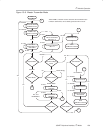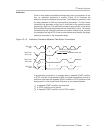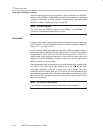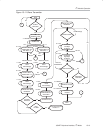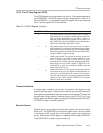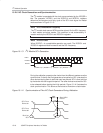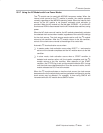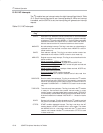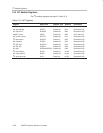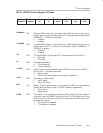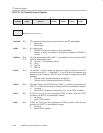
I
2
C Module Operation
15-17
USART Peripheral Interface, I
2
C Mode
15.2.7 Using the I
2
C Module with Low Power Modes
The I
2
C module can be used with MSP430 low-power modes. When the
internal clock source for the I
2
C module is present, the module operates
normally regardless of the MSP430 operating mode. When the internal clock
source for the I
2
C module is not present, automatic clock activation is
provided. When the I
2
C module is in the idle state, I2CBUSY = 0, and the I
2
C
clock source I2CIN is disconnected from the I
2
C module state machine, saving
power.
When the I
2
C clock source is inactive, the I
2
C module automatically activates
the selected clock source when needed, regardless of the control-bit settings
for the clock source. The clock source remains active until the I
2
C module
returns to idle condition. After the I
2
C module returns to the idle condition,
control of the clock-source reverts to the settings of its control bits.
Automatic I
2
C clock activation occurs when:
- In master mode, clock activation occurs when I2CSTT = 1 and remains
active until the transfer completes and the I
2
C module returns to the idle
condition.
- In slave mode, clock activation occurs when a START condition is
detected and remains active until the transfer completes and the I
2
C
module returns to the idle condition. After detection of the START
condition, the STTIFG flag is set, and the module holds the SCL line low
until the clock source becomes active. Once the source is active, the I
2
C
module releases the SCL line to the master.
When the I
2
C module activates an inactive clock source, the clock source
becomes active for the whole device and any peripheral configured to use the
clock source may be affected. For example, a timer using SMCLK will
increment while the I
2
C module forces SMCLK active.



